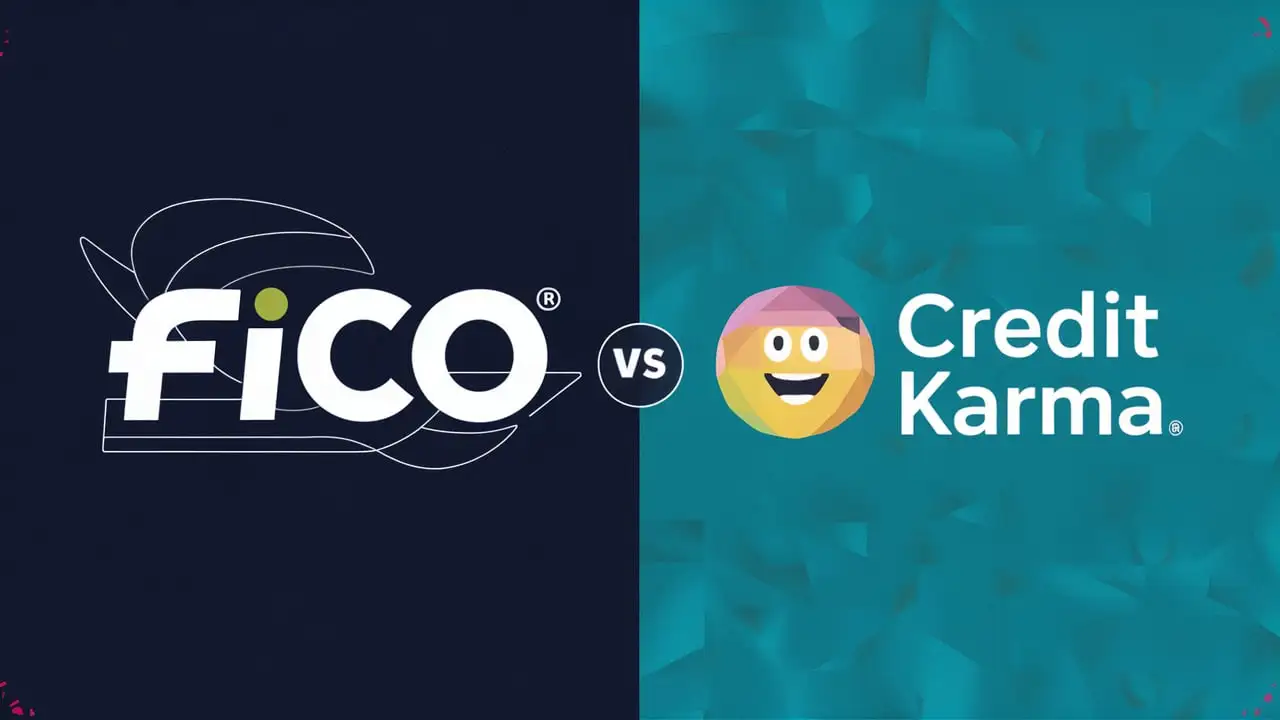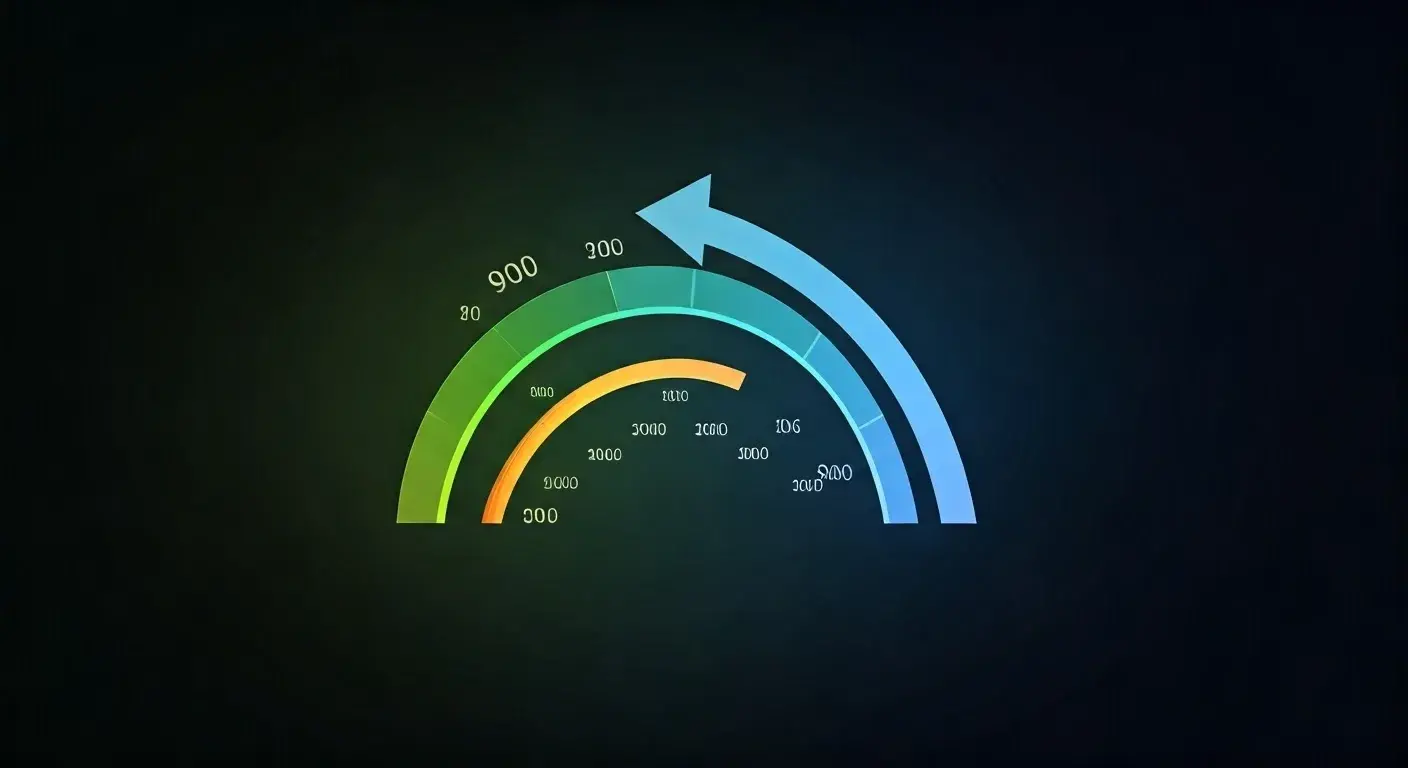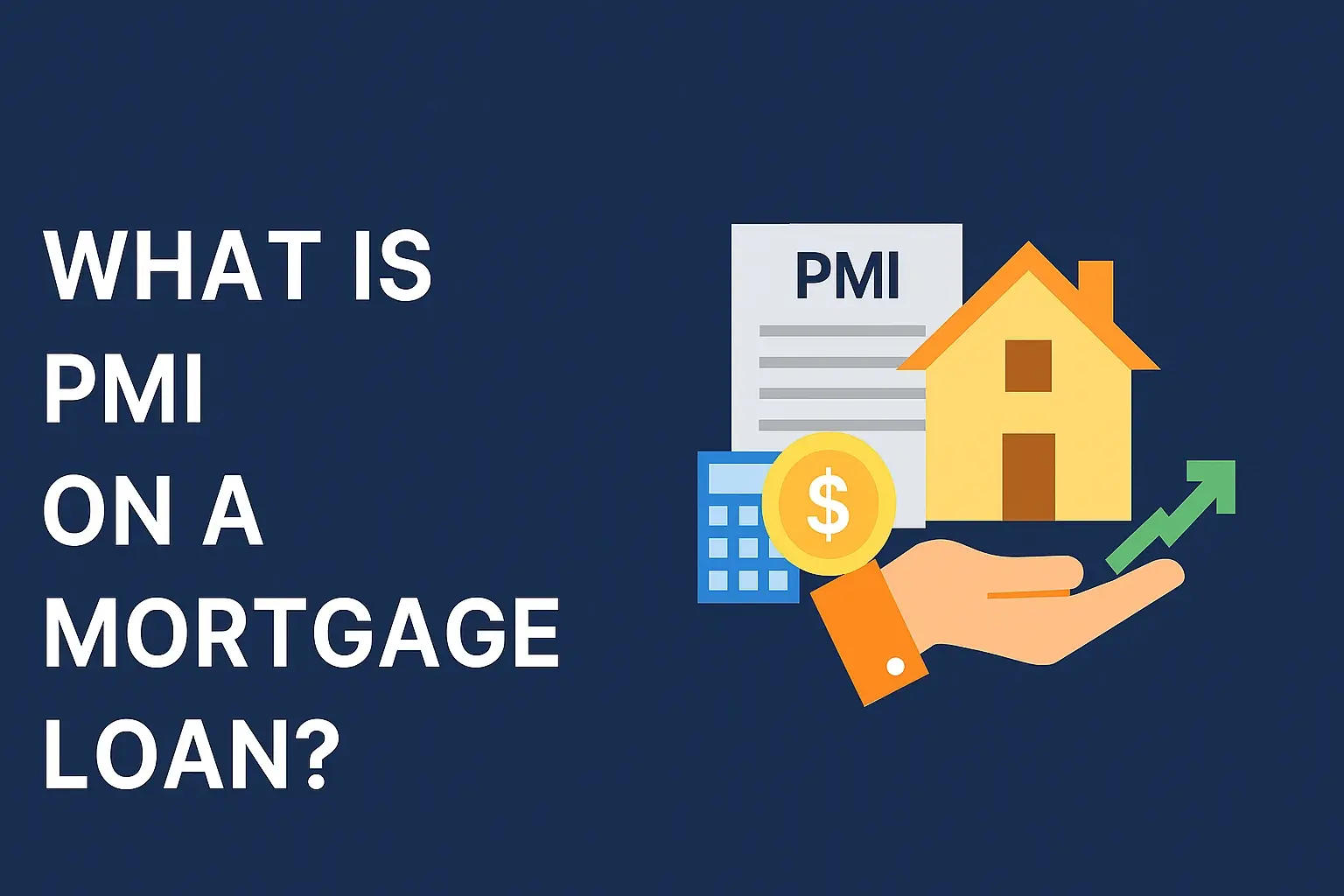-
Posted on: 01 Aug 2024

-
When comparing FICO and Credit Karma for credit score accuracy, the core question is which platform provides a more reliable reflection of your financial health. Both offer valuable insights, but their methodologies and data sources can lead to differing scores. This guide will dissect their differences to help you understand which is more accurate for your needs.
Understanding Credit Scores and Their Importance
Your credit score is a three-digit number that lenders use to assess your creditworthiness. It's a crucial element in determining whether you'll be approved for loans, credit cards, mortgages, and even rental agreements. A higher score signifies a lower risk to lenders, often translating into better interest rates and more favorable terms. Conversely, a low score can lead to rejections or significantly higher costs for borrowing money. Understanding the nuances of how these scores are generated and where to access them accurately is paramount for anyone seeking to manage their financial health effectively. This is where the comparison between FICO and Credit Karma becomes particularly relevant.
FICO Scores: The Gold Standard
FICO scores are widely considered the industry standard for credit scoring. Developed by the Fair Isaac Corporation, these scores are used by the vast majority of lenders in the United States when making lending decisions. When a lender pulls your credit, they are almost always looking at a FICO score, making it the most relevant metric for most financial applications.
How FICO Scores Are Calculated
FICO scores are calculated using a proprietary algorithm that analyzes data from your credit reports. The specific FICO score version can vary, as lenders may use different iterations (e.g., FICO Score 8, FICO Score 9, or industry-specific versions like FICO Auto Score or FICO Bankcard Score). However, the core components of the calculation remain consistent:
- Payment History (35%): This is the most significant factor. It includes whether you pay your bills on time, the amount of any overdue debt, and the severity of any delinquencies (e.g., 30, 60, 90 days late).
- Amounts Owed (30%): This refers to your credit utilization ratio – the amount of credit you're using compared to your total available credit. Keeping this ratio low (ideally below 30%, and even better below 10%) is crucial.
- Length of Credit History (15%): This considers how long your credit accounts have been open and the average age of your accounts. A longer history generally benefits your score.
- Credit Mix (10%): Having a mix of different types of credit (e.g., credit cards, installment loans like mortgages or auto loans) can be beneficial, showing you can manage various credit products responsibly.
- New Credit (10%): This factor looks at how many new credit accounts you've opened recently and how many hard inquiries are on your report. Opening too many accounts in a short period can negatively impact your score.
It's important to note that FICO uses data from one or more of the three major credit bureaus: Equifax, Experian, and TransUnion. The specific bureau(s) used can influence the exact score you receive.
FICO Score Ranges and What They Mean
While FICO has many score versions, the most common range is 300-850. Generally, scores are categorized as follows:
- Excellent: 800-850
- Very Good: 740-799
- Good: 670-739
- Fair: 580-669
- Poor: 300-579
These ranges are approximate, and lenders may have their own internal thresholds. However, achieving a score in the "Good" to "Excellent" range significantly improves your chances of loan approval and securing favorable interest rates.
Where to Get Your FICO Score
Directly obtaining your FICO score can be a bit more involved than getting a general credit score. Many credit card issuers and lenders offer free FICO scores to their customers as a benefit. Additionally, some financial institutions and credit monitoring services provide access to specific FICO scores. It's crucial to check which FICO score version is being provided, as it might not be the exact one a particular lender uses.
Credit Karma: A Popular Alternative
Credit Karma has gained immense popularity by offering free access to credit scores and reports. They provide a user-friendly platform and often include credit monitoring services, making them a go-to resource for many consumers looking to track their credit health. However, the scores provided by Credit Karma are not FICO scores.
How Credit Karma Calculates Scores
Credit Karma primarily uses VantageScore models to generate its credit scores. VantageScore is a competing credit scoring model developed collaboratively by the three major credit bureaus (Equifax, Experian, and TransUnion) as an alternative to FICO. While VantageScore aims to predict credit risk similarly to FICO, its algorithm and weighting of factors can differ. Credit Karma typically provides scores based on VantageScore 3.0 or VantageScore 4.0.
The factors influencing VantageScore are broadly similar to FICO, including:
- Payment History
- Credit Utilization
- Age and Type of Credit History
- Available Credit
- Recent Credit Behavior (e.g., new accounts, inquiries)
However, the precise weighting and how certain data points are interpreted can vary, leading to score discrepancies.
Credit Karma Score Ranges
VantageScore models also typically use a 300-850 score range, mirroring FICO. The categorization of scores within this range is similar:
- Excellent: 781-850
- Good: 661-780
- Fair: 601-660
- Poor: 501-600
- Very Poor: 300-500
These ranges are general guidelines, and the exact interpretation can depend on the specific VantageScore version used.
Credit Karma Data Sources
Credit Karma pulls data from Equifax and TransUnion to generate its scores. They do not typically pull data from Experian for their score calculations, which is another key difference from how some FICO scores are generated. This reliance on only two of the three bureaus can also contribute to score variations.
FICO vs. Credit Karma: Accuracy - The Head-to-Head
The question of "Is FICO or Credit Karma more accurate?" doesn't have a simple yes or no answer. Accuracy is relative to what a lender uses. Here's a breakdown of the key differences impacting perceived accuracy:
The Fundamental Difference: Score Models
The most significant reason for score differences lies in the underlying scoring models. FICO is the dominant model used by lenders. If a lender uses a FICO score, then a FICO score from a reliable source will be the most accurate reflection of what that lender sees. Credit Karma's VantageScore, while informative, may not align perfectly with the FICO score a lender pulls.
For example, a lender might use FICO Score 8. If you're checking your score on Credit Karma, you'll likely see a VantageScore 3.0 or 4.0. These models have different algorithms, leading to potentially different scores even when based on the same underlying credit report data.
Data Reporting Frequency and Delays
Credit bureaus report information to credit scoring companies on a monthly cycle. However, there can be a lag between when a transaction occurs or a payment is made and when it's reflected on your credit report. This reporting lag can cause temporary discrepancies between different score providers.
Furthermore, credit card companies and lenders don't all report to the credit bureaus on the same day of the month. This means that even if you check your FICO score and your VantageScore on the same day, one might reflect a recent payment or balance change that the other hasn't yet processed.
Example: You pay down a credit card balance significantly on the 28th of the month. If your credit card issuer reports to the bureaus on the 1st of the month, your credit utilization might be updated for the next scoring cycle. If Credit Karma pulls data from TransUnion and Experian, and a lender pulls a FICO score based on Experian data, the timing of this reporting can lead to a different score being displayed on Credit Karma versus what the lender sees.
Lender Usage: What Matters Most?
Ultimately, the "accuracy" of a credit score is determined by how closely it matches the score a lender uses for a specific decision. Since FICO is used by over 90% of top lenders, a FICO score is generally considered more "accurate" in the context of loan applications. If you're applying for a mortgage, auto loan, or credit card, the FICO score is the benchmark.
Credit Karma's VantageScore is valuable for understanding general credit trends and identifying potential issues. It can provide a good indication of your credit health and help you track improvements. However, it's not the score that most loan officers will be looking at.
Key Takeaway: For loan applications, a FICO score is the most relevant and therefore the most "accurate" measure of your creditworthiness.
Real-World Scenarios and Discrepancies
It's common for FICO scores and Credit Karma (VantageScore) scores to differ. These differences can range from a few points to several dozen points. Here are common reasons:
- Different Scoring Models: As discussed, FICO and VantageScore use different algorithms.
- Different Bureaus Used: Credit Karma typically uses TransUnion and Equifax. FICO scores can be generated using data from any one of the three bureaus (Equifax, Experian, TransUnion), and lenders may choose different bureaus for different products.
- Reporting Delays: The timing of when lenders report to bureaus can create temporary differences.
- Specific Score Versions: Lenders might use older or industry-specific FICO versions that differ from the general FICO score you might access.
- Errors on Credit Reports: If there's an error on one credit report but not another, or if the scoring model interprets the error differently, it can lead to score variations.
Example: Suppose you have a credit card with a $1,000 limit and a $900 balance. Your utilization is 90%. Credit Karma might show a score based on this data. However, if your credit card issuer only reports your balance to Experian, and the lender pulls a FICO score based on Equifax and TransUnion data where the balance is reported differently (or not yet updated), your FICO score might be higher.
Another Example: A collection account appears on your Experian report but not on your TransUnion or Equifax reports. If a lender pulls a FICO score based on Experian, that collection will significantly impact the score. If Credit Karma is using TransUnion and Equifax, this negative item might not be reflected in the score it provides.
Understanding Your Credit Report: The Foundation of Accuracy
Both FICO and Credit Karma (VantageScore) derive their scores from the information contained in your credit reports. Therefore, the accuracy of your credit score is fundamentally tied to the accuracy of your credit report. If your credit report contains errors, your scores will be inaccurate, regardless of the scoring model used.
Key Components of a Credit Report
Your credit report is a detailed history of your credit activity and includes:
- Personal Information: Name, address, Social Security number, date of birth, employment information.
- Credit Accounts: A list of all your credit cards, loans (mortgages, auto loans, student loans), and other credit lines. This includes the creditor's name, account number, date opened, credit limit or loan amount, current balance, and payment history.
- Public Records: Information on bankruptcies, judgments, liens, and other legal actions.
- Credit Inquiries: A record of who has accessed your credit report. "Hard inquiries" occur when you apply for credit and can slightly lower your score. "Soft inquiries" occur for promotional offers or when you check your own credit and do not affect your score.
How Errors Impact Scores
Errors on your credit report can significantly and negatively impact your credit scores. Common errors include:
- Incorrect Personal Information: Misspelled names, incorrect addresses, or accounts belonging to someone with a similar name.
- Accounts You Don't Recognize: Identity theft can lead to fraudulent accounts appearing on your report.
- Incorrect Payment Status: A payment marked as late when it was made on time.
- Incorrect Balances or Credit Limits: These can artificially inflate your credit utilization ratio.
- Duplicate Entries: The same debt appearing multiple times.
- Outdated Information: Negative information that should have fallen off your report according to the Fair Credit Reporting Act (FCRA).
If either FICO or Credit Karma is calculating a score based on erroneous data, that score will be inaccurate. This is why regularly reviewing your credit reports from all three bureaus is crucial.
Checking Your Credit Report Regularly
You are entitled to a free credit report from each of the three major credit bureaus (Equifax, Experian, and TransUnion) every 12 months. You can access these through the official government-mandated website, AnnualCreditReport.com. Many services, including Credit Karma, also provide access to your credit reports (though often only from two bureaus). Regularly reviewing these reports allows you to:
- Identify and dispute any errors promptly.
- Track your credit activity.
- Understand the data that is influencing your credit scores.
Disputing errors is a vital step in ensuring the accuracy of your credit information, which directly impacts your score's accuracy.
Strategies for Maximizing Credit Score Accuracy
To get the most accurate picture of your creditworthiness and ensure your scores reflect your true financial standing, adopt a multi-faceted approach.
Monitor Both Platforms Strategically
Don't rely on just one source. Use Credit Karma (or similar services) for ongoing, free monitoring of your VantageScore and credit reports from TransUnion and Equifax. This helps you catch changes quickly. Supplement this by seeking out opportunities to view your FICO score, often provided by credit card issuers or through specialized services. This dual monitoring provides a more comprehensive view.
Why this helps: If you see a significant score drop on Credit Karma, you can investigate your reports from TransUnion and Equifax. If you then see a different score from a FICO provider, you can compare the underlying data on your reports to pinpoint the source of the discrepancy. This allows for quicker identification of issues.
Understand Your Specific FICO Score
Recognize that there isn't just one FICO score. Lenders use various FICO versions (e.g., FICO Score 8, FICO Auto Score 3, FICO Score 9). While general FICO scores are useful, if you're applying for a specific type of loan, try to find out which FICO score version is most commonly used for that product. Some services might offer access to these specific versions.
Actionable Tip: When your credit card issuer offers a "free credit score," check if it specifies "FICO Score" and which version. This information is often found in the fine print or within the credit score details section.
Address Discrepancies Promptly
If you notice a significant difference between your FICO score and your Credit Karma score, or if you find errors on your credit reports:
- Identify the source: Determine which credit bureau is reporting the differing information.
- Gather evidence: Collect any documentation that supports your claim (e.g., payment receipts, statements).
- Dispute with the credit bureau: File a dispute online, by mail, or by phone with the credit bureau reporting the error.
- Notify the creditor: Sometimes, it's also helpful to inform the original creditor about the error.
The FCRA requires credit bureaus to investigate disputes within a reasonable timeframe (typically 30 days). Resolving errors quickly ensures that your scores are based on accurate data.
Focus on Good Credit Habits
Regardless of which score you're looking at, the underlying principles for building good credit are the same. Prioritizing these habits will positively impact all your credit scores:
- Pay all bills on time, every time.
- Keep credit utilization low (below 30%, ideally below 10%).
- Avoid opening too many new credit accounts at once.
- Maintain a mix of credit types over the long term.
- Don't close old, unused credit accounts unless there's a compelling reason (like high annual fees).
By consistently practicing these habits, you build a strong credit history that will be reflected positively across all scoring models and credit bureaus.
Current 2025 Statistics and Trends
The credit landscape is constantly evolving. Understanding current trends provides context for why score accuracy and monitoring are more important than ever.
Credit Scoring Model Adoption in 2025
FICO remains the dominant force in credit scoring. As of early 2025, it's estimated that over 90% of top lenders use FICO scores for lending decisions. VantageScore continues to gain traction, particularly among credit monitoring services and some newer fintech lenders, but it has not yet surpassed FICO in widespread lender adoption for major credit products like mortgages and auto loans. Newer FICO versions, such as FICO Score 10 and FICO Score 10T, are being adopted, which incorporate trended data (how your balances and payments have changed over time) for potentially more predictive scores.
Consumer Credit Monitoring Usage 2025
The use of free credit monitoring services like Credit Karma has surged. By 2025, it's estimated that over 70% of U.S. adults with internet access have used at least one free credit monitoring service. This increased accessibility has led to greater consumer awareness of credit scores but also a potential for confusion due to the prevalence of VantageScores being offered freely, which may differ from FICO scores used by lenders.
Impact of Economic Factors on Credit 2025
In 2025, economic conditions continue to influence credit scores. Factors such as inflation, interest rate changes, and potential economic slowdowns can affect consumers' ability to manage debt. Increased credit card balances due to inflation can raise credit utilization ratios, potentially lowering scores. Lenders are also closely watching delinquency rates, which can be influenced by economic pressures. This makes accurate and timely credit monitoring essential for consumers to stay ahead of potential financial challenges.
The adoption of new scoring models that consider behavioral patterns (like FICO 10T) also reflects a trend towards more nuanced risk assessment, aiming to better predict future credit behavior in varying economic climates. This further underscores the importance of understanding the specific scoring models and data sources that influence your creditworthiness.
Conclusion: Navigating Credit Score Accuracy
When asking, "Is FICO or Credit Karma more accurate?", the answer hinges on your objective. For the most critical financial decisions, such as applying for loans or credit cards, FICO scores are generally considered more accurate because they are the standard used by the vast majority of lenders. Credit Karma, while providing valuable free access to credit scores (typically VantageScore) and reports, offers a score that may differ from what a lender sees.
The discrepancies arise from different scoring algorithms (FICO vs. VantageScore), varying data sources (which credit bureaus are used), and the timing of data reporting. To effectively manage your credit, it's crucial to understand these differences. Regularly monitor your credit reports from all three bureaus via AnnualCreditReport.com, and use services like Credit Karma for ongoing tracking of your VantageScore and credit report details. Supplement this by seeking out your FICO score whenever possible, often provided by your credit card issuers. By understanding the nuances, addressing any errors promptly, and focusing on consistent, responsible credit habits, you can confidently navigate the world of credit scoring and ensure your financial reputation is accurately represented.
Faq
1. Is FICO or Credit Karma more accurate?
FICO scores are generally more accurate and widely used by lenders when making credit decisions. Credit Karma uses VantageScore, which can give a similar estimate but may differ by several points since lenders typically rely on FICO for approvals.
2. Why is my Credit Karma score different from my FICO score?
Credit Karma uses the VantageScore 3.0 model, while most lenders use FICO® Score versions. Each model weighs factors like payment history, credit age, and utilization differently, which can result in score variations of 20–40 points or more.
3. Which score do lenders actually use—FICO or Credit Karma?
Nearly 90% of top lenders in the U.S. use FICO scores for credit approvals, loan rates, and credit limit decisions. Credit Karma’s VantageScore is best used as a free educational tool to track credit health trends.
4. Can I rely on Credit Karma when applying for a loan or credit card?
Credit Karma is useful for monitoring your credit progress and understanding your general standing. However, since lenders rely on FICO, it’s wise to check your FICO score before major applications like mortgages, car loans, or credit cards.
5. How can I check my official FICO score for free?
You can access your official FICO score through some credit card issuers, banks, or by purchasing it directly from myFICO.com. Many financial institutions now include FICO access in their online banking tools.










